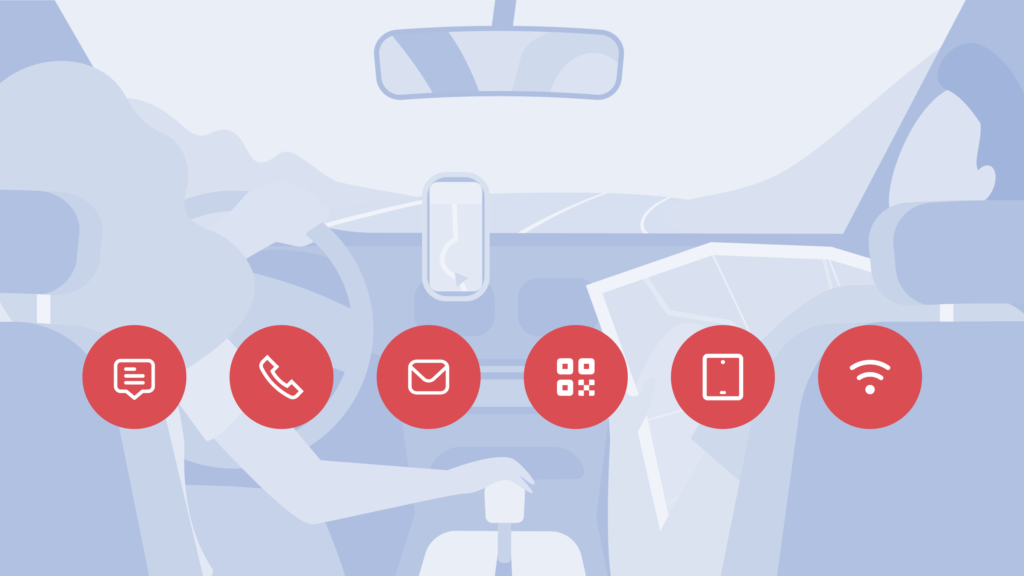Increasing automotive customer satisfaction KPI scores is possible, so long as you’re listening to your customers. Automobile customer satisfaction depends on a variety of customer satisfaction factors, including automobile consumer reviews. Learn how your company can control performance using 360-degree feedback.
Why feedback matters
According to research by Gartner, companies that use feedback to actively listen to their customers spend 25% less on customer retention than those that don’t (1). And yes, this includes automobile customer feedback.
How feedback affects customer satisfaction:
- Asking for it shows your company cares about customers’ opinions
- You’ll get insights into customers’ wants and needs
- You can monitor your customer satisfaction metrics
- You can get feedback regarding specific touchpoints and locations
- Responding to your automobile consumer reviews increases customer satisfaction
On a broader scale, we’ve 8 more reasons in our Feedback Economy 101 article on how customer feedback benefits your business.
Convinced? Then set up a game plan.
How to utilise feedback to improve satisfaction
So, if you haven’t already done so, create a 360 feedback template or outline. This will include your selected customer satisfaction metrics, the questions in your customer satisfaction survey, the channels you wish to use, and what your company will do to further engage your automobile consumer reviews.
Pick a customer satisfaction KPI
Due to the multi-dealership and commission environment of the automobile industry, it has long tracked customer satisfaction metrics to measure and reward performance based on the customers’ feedback.
Popular automobile customer satisfaction metrics:
- NPS: Net Promoter Score measures customer loyalty overtime and is benchmarked externally.
- CES: Customer Effort Score measures the ease of an interaction at a certain point in your customer journey
- CSAT: Customer Satisfaction Score measures customer satisfaction after a specific touchpoint.
- CLI: Customer Loyalty Index measures customer loyalty, intent to repurchase, and potential to cross-sell.
So, review the above customer satisfaction metrics, and determine which is best for your business. And, if you are already utilising one of these, consider adding another for further insights.
We cover these metrics in-depth here: How to measure customer satisfaction KPI: NPS, CSAT, CES, & CLI.
Create smart customer satisfaction surveys
Ask your automotive customers for their feedback throughout the customer journey with surveys.
So, what do we mean by a “smart” customer satisfaction survey? Taking a cue from the acronym S.M.A.R.T.— Specific, Measurable, Achievable, Relevant, and Time-bound, your survey should be:
Specific: Ask specific questions to get better insights.
Measurable: Include a customer satisfaction KPI or 2 to monitor performance.
Achievable: Set appropriate goals for your survey response rate and metrics.
Relevant: Ask questions only related to the recent brand interaction (unless about overall satisfaction).
Time-bound: Automate your surveys to be sent at appropriate time-intervals after an interaction. (I.e. don’t wait too long)
In short, don’t send surveys just to say your company does.
Map out your customer journey, segment your customers, decide what you want your customer satisfaction survey to measure and what type of information you want to get. And naturally, ask customers for their feedback on the relevant touchpoint.
We have an entire article for you on How to create a successful customer satisfaction survey.
Determine your channels
The digitalisation of the customer car user journey has grown rapidly since the pandemic. It’s essential for your automotive company to keep up.

We’re talking feedback chats or forms on your company website, in-store tablets, social media WiFi start page, and QR codes. And, of course, don’t forget the still-important email, SMS, or phone call surveys.
Research which channels your customers prefer to leave their customer feedback automobile experiences and meet them there.
Analyse and act
Once you start collecting your customer feedback, you should use a customer feedback software to analyse it. You can discover which automotive customer satisfaction factors are most important to them.
Track your customer satisfaction metrics, perform semantic analysis on your survey and review feedbacks, and monitor individual locations’ customer satisfaction scores.
P.S. Don’t forget to snag that review
87% of car shoppers look at automobile consumer reviews before purchasing (2).
More and more potential customers are looking at your customer feedback car reviews. They can do a major service in convincing website visitors to visit your dealership.
Therefore, we recommend you invite your car users to make their feedback public at the end of your survey. You can do this with a customer feedback software that has review distribution capabilities, sending reviews to major review sites like Google.
In summary, this will complete the 360 feedback cycle and offer the possibility for a potential customer to begin their customer journey with you by first reading your reviews. And so, the feedback economy continually delivers insights, more potential customers, and ultimately, more revenue.
Sources:
- Gartner Research: Implement Customer Satisfaction Management Processes to Increase Revenue.
- BrightLocal: Local Consumer Review Survey 2020
